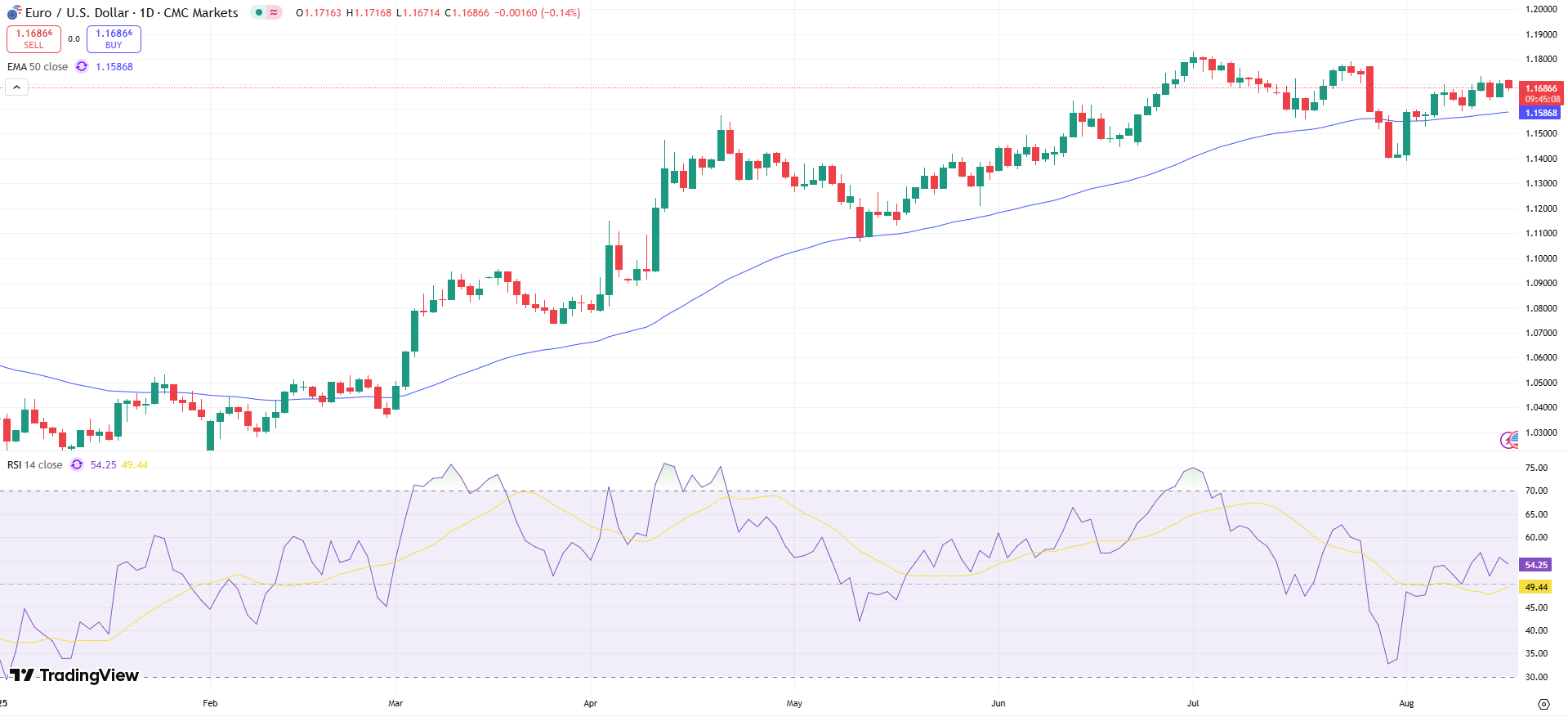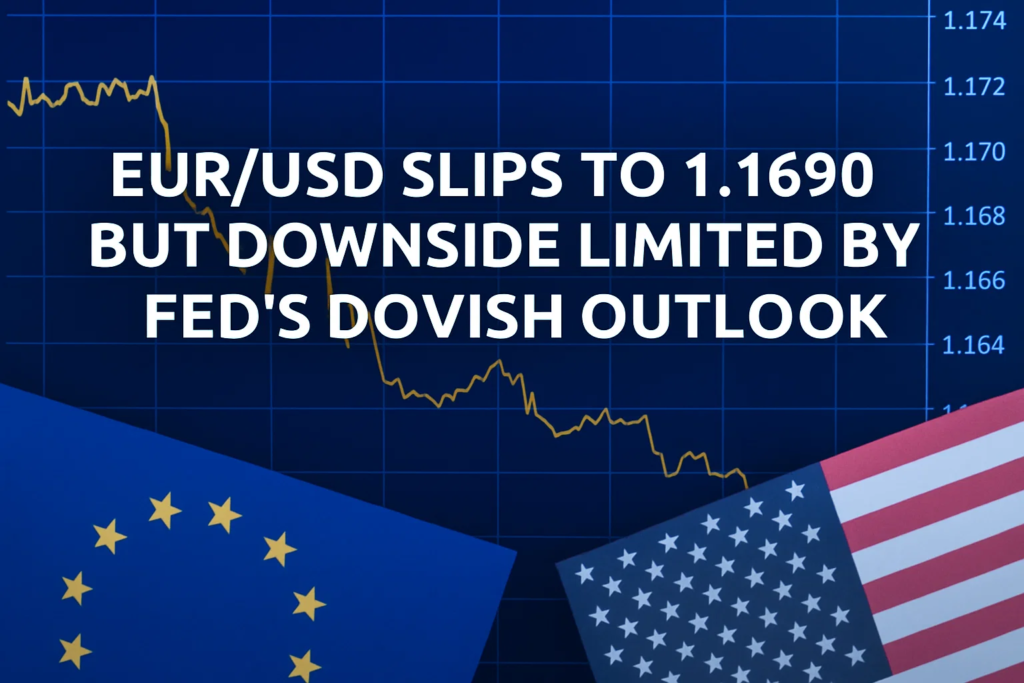The EUR/USD pair edged lower to 1.1690 in Monday’s Asian session, giving back part of last week’s 0.5% gain. While the dollar strengthened following hotter U.S. inflation data, analysts note that dovish Federal Reserve guidance continues to provide downside protection for the euro.
Technical signals highlight market indecision. The Relative Strength Index (RSI) sits slightly above 50 on the four-hour chart, while the pair remains near its 200-period Simple Moving Average (SMA). These readings suggest momentum is muted as traders await fresh catalysts.
Key technical markers:
- Resistance: 1.1720, 1.1760, 1.1800.
- Support: 1.1660–1.1650, 1.1620, 1.1600.
The euro’s next move will likely hinge on whether U.S. economic data confirms or challenges the Fed’s cautious tone ahead of its September policy meeting.
Inflation Data Shifts Fed Outlook
Last week, the Producer Price Index (PPI) rose 3.3% year-over-year in July, accelerating from June’s 2.4% and far above the 2.5% market consensus. On a monthly basis, both headline and core PPI climbed 0.9%, underscoring persistent inflation pressures.
The data dampened expectations for aggressive rate cuts. According to the CME FedWatch Tool, the probability of a 75-basis-point reduction by year-end slipped below 45%, down from nearly 55% prior to the release. Markets now see a higher likelihood of smaller, incremental cuts instead of the three moves some had anticipated.
This shift initially buoyed the dollar against peers. Yet many analysts argue the Fed remains wary of overtightening and will maintain a dovish bias unless inflation surprises remain consistent in the months ahead.
Data Watch: Retail Sales and Sentiment
Investors are turning their attention to upcoming U.S. economic releases, which could set the tone for currency markets in the second half of the week.

- Retail Sales (July): Forecast +0.5%; a surprise above 1% could strengthen the dollar and weigh on EUR/USD.
- University of Michigan Consumer Sentiment (August): Markets will closely monitor the one-year inflation expectations component. A sharp decline could undermine the dollar by reinforcing dovish Fed expectations.
With euro-dollar trading pinned between technical levels, short-term moves will likely be dictated by whether these figures validate a cautious Fed or reignite concerns of sticky inflation.
For now, EUR/USD’s downside appears limited, but traders remain alert to data that could tip the balance.


